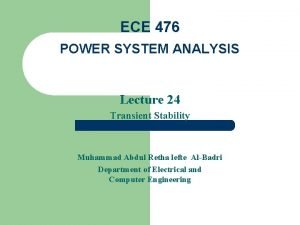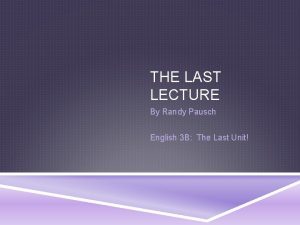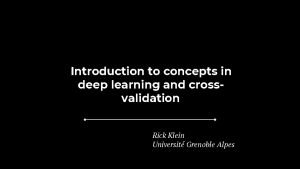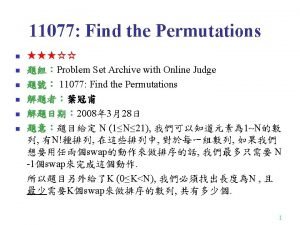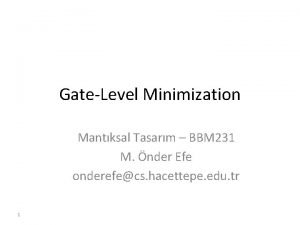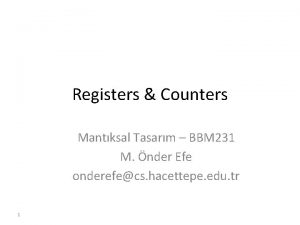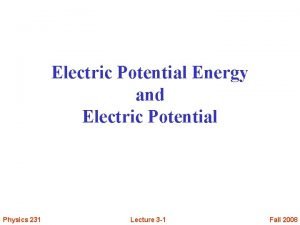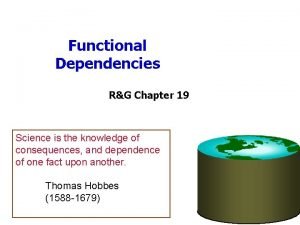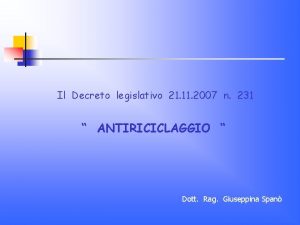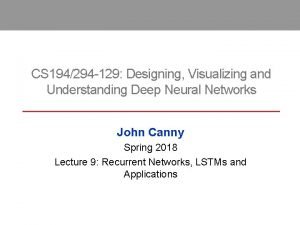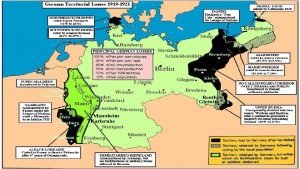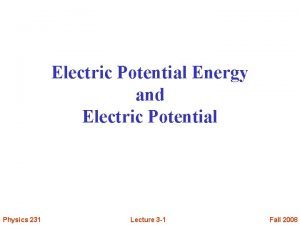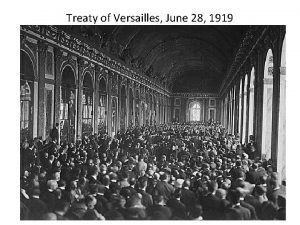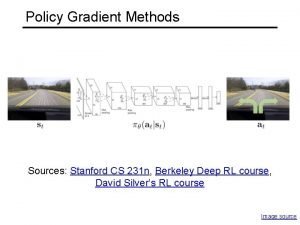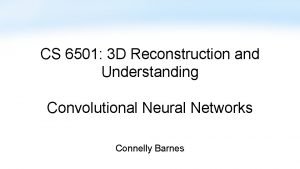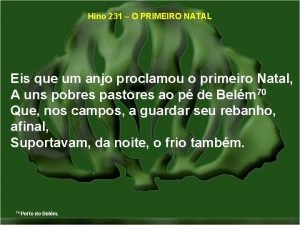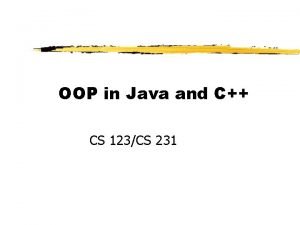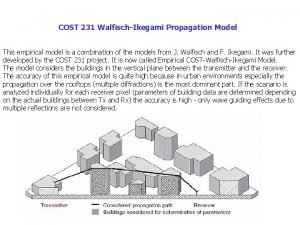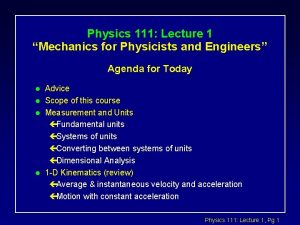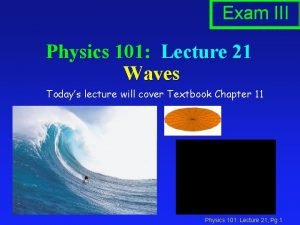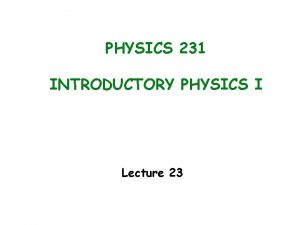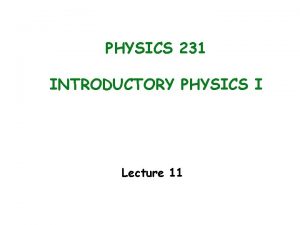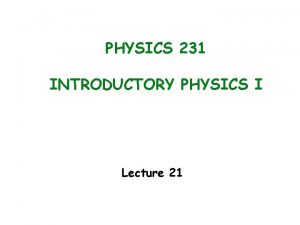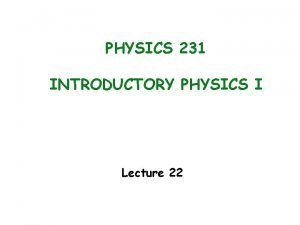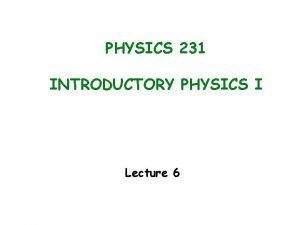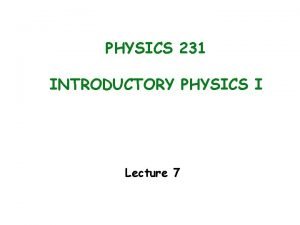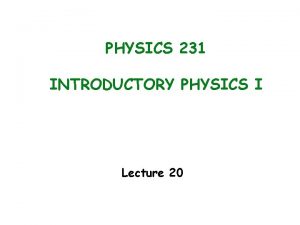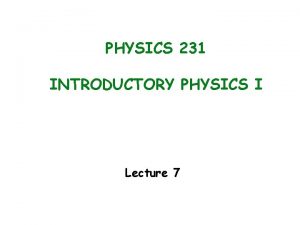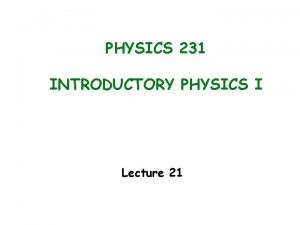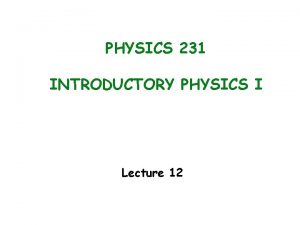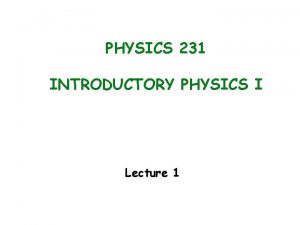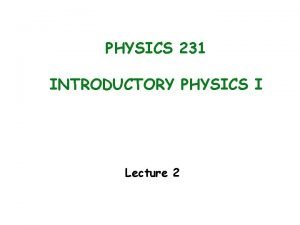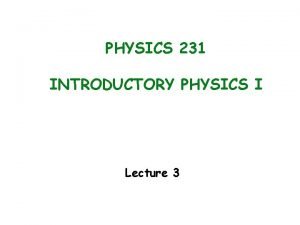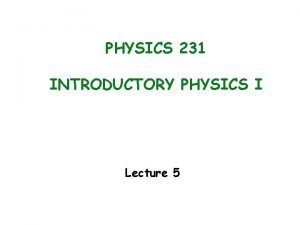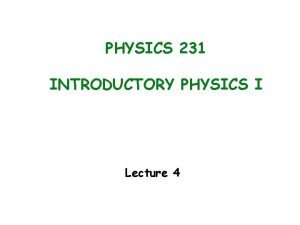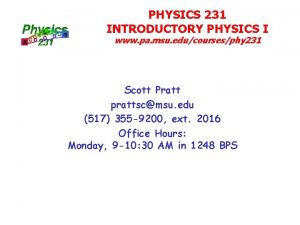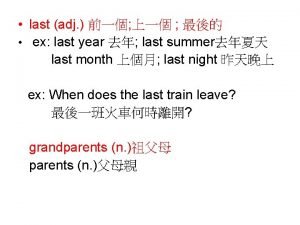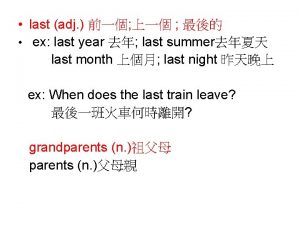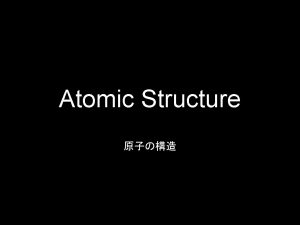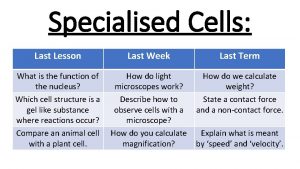PHYSICS 231 INTRODUCTORY PHYSICS I Lecture 19 Last




























- Slides: 28

PHYSICS 231 INTRODUCTORY PHYSICS I Lecture 19

Last Lecture • First Law of Thermodynamics • Work done by/on a gas

Some Vocabulary P • Isobaric V • P = constant • Isovolumetric • V = constant • W = 0 • Isothermal • T = constant • U = 0 (ideal gas) P V • Adiabatic • Q = 0 P V

P-V Diagrams P Path moves to right: Wby the gas = Area under curve P V Path moves to left: Wby the gas = - Area under curve V (Won the gas = - Wby the gas)

Work from closed cycles Clockwise cycle: WA->B->A= Area Counterclockwise cycle: WA->B->A= -Area in closed cycles (work done by gas)

Example 12. 8 a Consider an ideal gas undergoing the trajectory through the PV diagram. In going from A to B to C, the work done BY the gas is _______ 0. C P A B V a) > b) < c) =

Example 12. 8 b In going from A to B to C, the change of the internal energy of the gas is _______ 0. C P A B V a) > b) < c) =

Example 12. 8 c In going from A to B to C, the amount of heat added to the gas is _______ 0. C D P A B V a) > b) < c) =

Example 12. 8 d In going from A to B to C to D to A, the work done BY the gas is _______ 0. C D P A B V a) > b) < c) =

Example 12. 8 e In going from A to B to C to D to A, the change of the internal energy of the gas is _______ 0. C D P A B V a) > b) < c) =

Example 12. 8 f In going from A to B to C to D to A, the heat added to the gas is _______ 0. C D P A B V a) > b) < c) =

Consider a monotonic ideal gas. Example 12. 7 a) What work was done by P (k. Pa) the gas from A to B? A 75 20, 000 J b) What heat was added to the gas between A and B? 50 20, 000 J c) What work was done by the gas from B to C? 25 -10, 000 J C d) What heat was added to the gas between B and C? -25, 000 J 0. 2 e) What work was done by the gas from C to A? 0 f) What heat was added to the gas from C to A? 15, 000 J B V (m 3) 0. 4 0. 6

Example 12. 7 (Continued) g) What was total work done by gas in cycle? P (k. Pa) |Qin| A WAB + WBC + WCA = 10, 000 J h) What was total heat added to gas in cycle? C B QAB + QBC + QCA = 10, 000 J This does NOT mean that the engine is 100% efficient! |Qin| = QAB + QCA= 35, 000 J |Qout| = |QBC| = 25, 000 J V (m 3) |Qout| Exhaust!!! Weng = |Qin|-|Qout|

Heat Engines • Described by a cycle with: Qhot= heat that flows into engine from source at Thot Qcold= heat exhausted from engine at lower temperature, Tcold W= work done by engine Qhot engine W Qcold • Efficiency is defined: using

2 nd Law of Thermodynamics (version 1) No heat engine can be 100% efficient The most efficient engine is the Carnot Engine (an idealized engine), for which: (T in Kelvin) In practice, we always have

Carnot Cycle

Example 12. 9 An ideal engine (Carnot) is rated at 50% efficiency when it is able to exhaust heat at a temperature of 20 ºC. If the exhaust temperature is lowered to -30 ºC, what is the new efficiency. e = 0. 585

Refrigerators Just a heat engine run in reverse! • Pull Qcold from fridge • Exhaust Qhot to outside Coefficient of Performance: Qhot fridge W Qcold Most efficient is Carnot refrigerator: Note: Highest COP for small T differences

Heat Pumps Same as refrigerator, except • Pull Qcold from environment • Exhaust Qhot to inside of house Coefficient of Performance: Qhot heat pump W Qcold Again, most efficient is Carnot: Like Refrigerator: Best performance for small T

Example 12. 10 A modern gas furnace can work at practically 100% efficiency, i. e. , 100% of the heat from burning the gas is converted into heat for the home. Assume that a heat pump works at 50% of the efficiency of an ideal heat pump. If electricity costs 3 times as much per kw-hr as gas, for what range of outside temperatures is it advantageous to use a heat pump? Assume Tinside = 295 ºK.

Entropy • Measure of Disorder of the system (randomness, ignorance) • S = k. Blog(N) N = # of possible arrangements for fixed E and Q Relative probabilities for 12 molecules to arrange on two halves of container.

2 nd Law of Thermodynamics (version 2) The Total Entropy of the Universe can never decrease. On a macroscopic level, one finds that adding heat raises entropy: Defines temperature in Kelvin!

Why does Q flow from hot to cold? • Consider two systems, one with TA and one with TB • Allow Q > 0 to flow from TA to TB • Entropy changes by: S = Q/TB - Q/TA • This can only occur if S > 0, requiring TA > TB. • System will achieve more randomness by exchanging heat until TB = TA

Carnot Engine Carnot cycle is most efficient possible, because the total entropy change is zero. It is a “reversible process”. For real engines:

Example 12. 11 a An engine does an amount of work W, and exhausts heat at a temperature of 50 degrees C. The chemical energy contained in the fuel must be greater than, and not equal to, W. a) True b) False

Example 12. 11 b A locomotive is powered by a large engine that exhausts heat into a large heat exchanger that stays close to the temperature of the atmosphere. The engine should be more efficient on a very cold day than on a warm day. a) True b) False

Example 12. 11 c An air conditioner uses an amount of electrical energy U to cool a home. The amount of heat removed from the home must be less than or equal to U. a) True b) False

Example 12. 11 d A heat pump uses an amount of electrical energy U to heat a home. The amount of heat added to a home must be less than or equal to U. a) True b) False
 01:640:244 lecture notes - lecture 15: plat, idah, farad
01:640:244 lecture notes - lecture 15: plat, idah, farad Randy pausch last lecture summary
Randy pausch last lecture summary Cs 231 n
Cs 231 n 123 132 213 231 312 321
123 132 213 231 312 321 Bbm 231
Bbm 231 Gezang 231
Gezang 231 Toastmasters pledge
Toastmasters pledge Draw 231 with base ten blocks
Draw 231 with base ten blocks Pa msu
Pa msu Cs 231 n
Cs 231 n Al quran muka surat 226
Al quran muka surat 226 Qa 1
Qa 1 Potential gradient
Potential gradient Acf 231
Acf 231 040 231 3666
040 231 3666 Decreto 231/2007
Decreto 231/2007 Coco
Coco German territorial losses ww1
German territorial losses ww1 Cs 231
Cs 231 Potential gradient
Potential gradient Article 231 of the treaty of versailles
Article 231 of the treaty of versailles Stanford cs231
Stanford cs231 Mvcnn pytorch
Mvcnn pytorch Soft vs hard attention
Soft vs hard attention O primeiro natal hino 231
O primeiro natal hino 231 Java 231
Java 231 Cost 231 walfisch-ikegami model
Cost 231 walfisch-ikegami model Physics 111 lecture notes
Physics 111 lecture notes Physics 101 lecture notes pdf
Physics 101 lecture notes pdf
